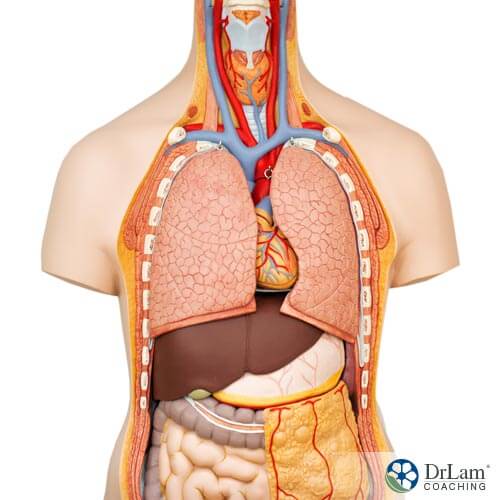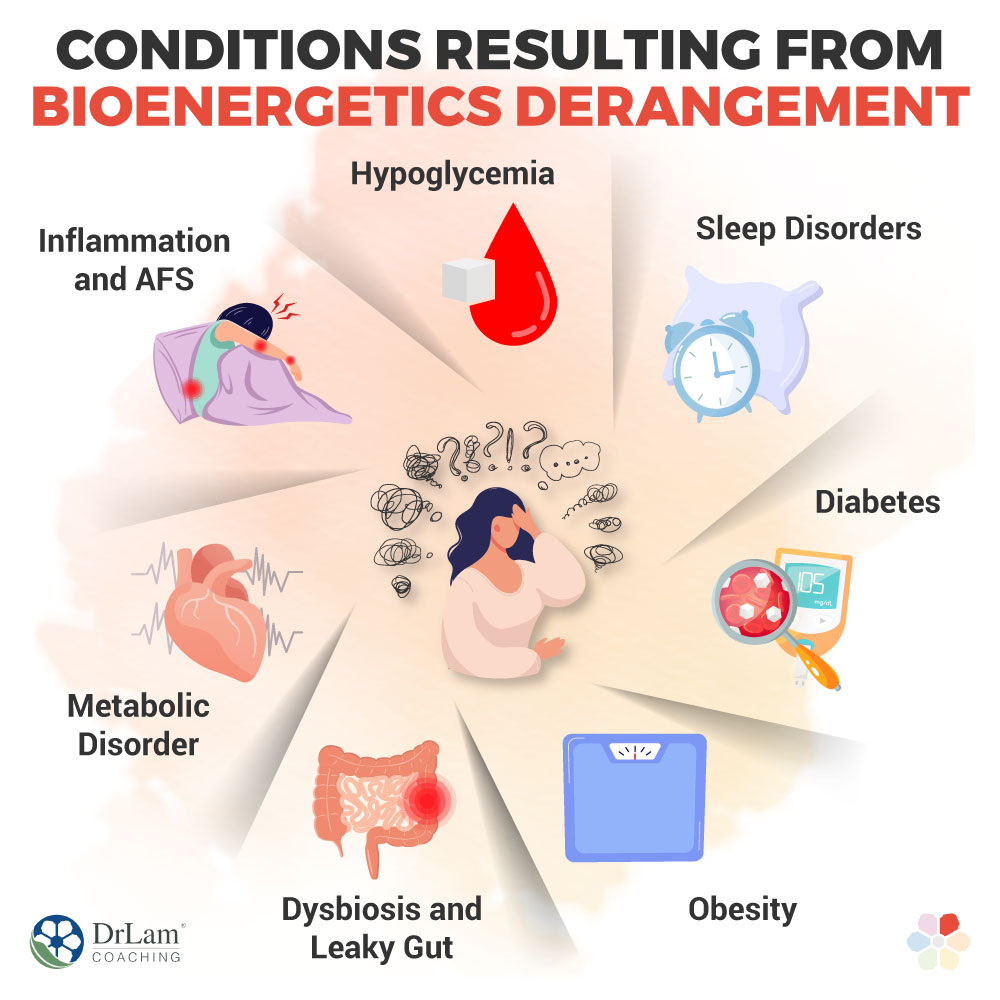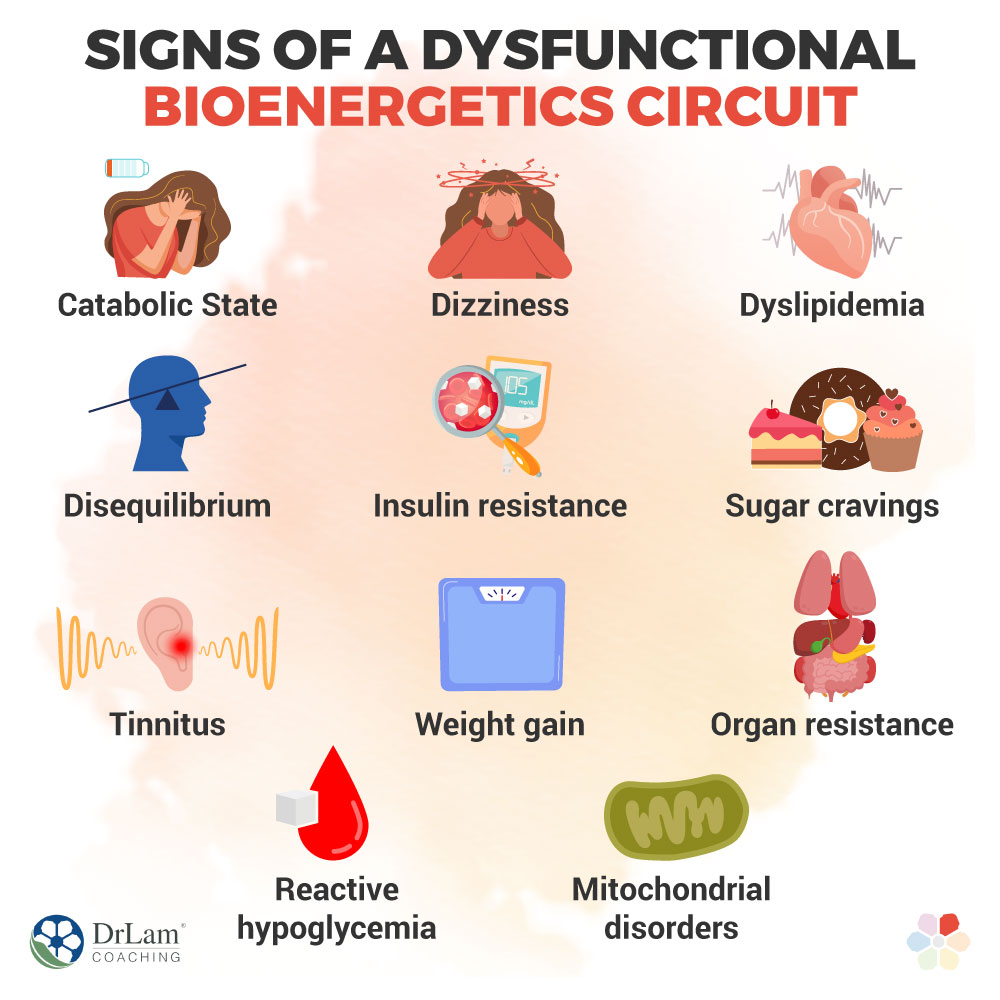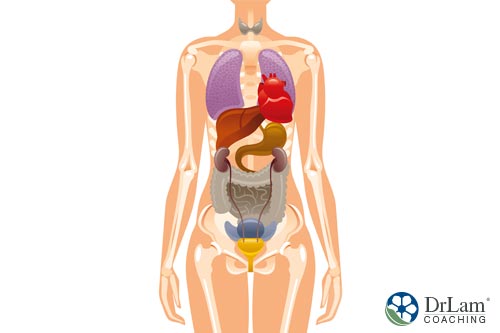 Our body’s built-in apparatus to handle stress is called the NeuroEndoMetabolic Stress Response. It consists of 6 biological circuits, with 3 systems within each. Each circuit plays a role in neutralizing stress when it arrives at our doorstep. The six circuits are the hormonal, cardionomic, neuroaffect, inflammation, detoxification, and bioenergetics circuit. The metabolism functions carried out by the bioenergetics circuit have been among the least-known ways the body responds to stress. The three organ systems that make up the Bioenergetics circuit of the NeuroEndoMetabolic (NEM) Stress Response model are these:
Our body’s built-in apparatus to handle stress is called the NeuroEndoMetabolic Stress Response. It consists of 6 biological circuits, with 3 systems within each. Each circuit plays a role in neutralizing stress when it arrives at our doorstep. The six circuits are the hormonal, cardionomic, neuroaffect, inflammation, detoxification, and bioenergetics circuit. The metabolism functions carried out by the bioenergetics circuit have been among the least-known ways the body responds to stress. The three organ systems that make up the Bioenergetics circuit of the NeuroEndoMetabolic (NEM) Stress Response model are these:
Their primary function is to produce the energy needed by every cell in the body to carry out its function. When things go wrong with the Bioenergetics circuit, it can lead to a downward spiral that affects every system in the body.
When stress is responsible for metabolism derangement or Bioenergetics dysfunction, the resulting symptoms will only worsen unless the effects of stress are resolved. Paradoxical reactions, repeated adrenal crashes, severe constipation, oversensitivity to supplements, intolerance of medications, and hypersensitivity to electromagnetic forces are some of these symptoms.
Multiple pathophysiologic pathways are likely involved in metabolic derangement. Regardless of which one (or more) of these pathways is involved, the derangement of metabolic functioning is a huge part of the downward spiral that comes as the body loses its ability to deal with stress.
Unfortunately, by the time these metabolic symptoms emerge, significant problems occur that indicates the compromise of the body’s ability to deal with stress. Reactive hypoglycemia, gastric shutdown, and low blood pressure are three of these types of problems. They indicate the body going into a catabolic state in order to conserve remaining energy sources.
The effects of stress on the metabolic system differ from stage to stage.

The Bioenergetics circuit is implicated and involved in a number of physical conditions. Hypoglycemia is one of those conditions.
It is possible for people to be hypoglycemic but not show the typical symptoms. This makes it difficult to assess properly. Adding AFS to this condition increases the difficulty significantly.
AFS sufferers commonly have hypoglycemia due to decreased cortisol and increased insulin levels. Normally, with increasing stress comes increased cortisol and increased glucose released into the body. As stress continues, cortisol decreases and glucose release slows. With the increased release of insulin to counter the initial higher levels of glucose, continued stress leads to hypoglycemia.
Much of the time, this condition of hypoglycemia will be subclinical, leading to conventionally-trained medical professions missing the connection between stress and hypoglycemia.
Hypoglycemia will often prevent the body from obtaining sufficient energy from food being converted to sugar. This leads to the body burning fat and protein for energy. Doing this is an inefficient way to provide energy. Cortisol levels must be high enough for this type of energy to be supplied. With cortisol levels decreasing with continuing stress, the body lacks the energy required to function well. Very significant symptoms can result from hypoglycemia.
The brain is particularly sensitive to low blood sugar levels. When it senses these low levels, it stimulates different organs to release hormones into the bloodstream. The intent is to stimulate the liver to release more glucose. If this doesn’t work, the result may be seizures, confusion, and loss of consciousness.
Sleep disorders also occur with dysregulation of the Bioenergetics circuit. Fluctuating cortisol levels and inadequate blood sugar affect sleep negatively. Low blood sugar levels lead to early morning awakenings, often because the body needs some food to supply more sugar. Cortisol levels that are too high at night and too low in the daytime cause sleep problems also.
Sleep deprivation then becomes an added stressor for the body. The more sleep is affected by the results of stress, the more added stress comes from sleep deprivation.
Type 1 diabetes comes from the body’s immune system attacking the cells in the pancreas. This happens when metabolism is dysregulated, leading to a triggering of the immune response. The lack of insulin resulting from Type 1 diabetes has a significant impact on metabolism, particularly mitochondrial functioning.
 Obesity is a steadily increasing health issue around the world. Research has shown multiple connections between obesity and metabolic disorders. Adipose tissue is very insulin resistant. Insulin has been found to play a major role in the connections between obesity and metabolism, particularly in the metabolism of carbohydrates and glucose. Stress has also been connected to an increased risk of developing obesity.
Obesity is a steadily increasing health issue around the world. Research has shown multiple connections between obesity and metabolic disorders. Adipose tissue is very insulin resistant. Insulin has been found to play a major role in the connections between obesity and metabolism, particularly in the metabolism of carbohydrates and glucose. Stress has also been connected to an increased risk of developing obesity.
Metabolic disorder is one of those less well-known conditions related to stress and the Bioenergetics circuit. The development of metabolic disorder occurs over a long period of time. Insulin resistance, insulin, and blood sugar levels all play major roles in developing metabolic syndrome and in its physical results. Advanced aging, diabetes, and coronary heart disease are results of the physical changes that occur with metabolic disorder.
There is a significant connection between liver dysfunction and dysbiosis of the microbiome. With dysbiosis of the microbiome comes a weakening of the normally tight junctions of the epithelial cells lining the small intestine. This allows undigested food particles, bacteria, and various pathogens access to the bloodstream and the rest of the body. The immune system is triggered to begin attacking these substances, and inflammation sets in.
Increases in inflammation lead to more pressure on the adrenal glands. Cortisol is required to fight the inflammation. With continued pressure of this nature, the already weakened adrenals in those with AFS become exhausted and unable to provide the needed cortisol. Inflammation increases, leading to further weakening of the body.
Eventually, the continuing pressure on the adrenals leads to an adrenal crash. The body goes into an energy conservation mode and the person becomes too weak to function.

The liver is the detoxification organ of the body, charged with removing toxins and the waste from the metabolic process. Liver function is primarily guided by insulin levels. If the blood sugar levels in the body decrease to a sufficiently low level, the liver is stimulated to release stored up glucose.
The liver also handles the removal of metabolites from the body. While many of these metabolites are inert, others can become active. Many of the active metabolites come from an incomplete breakdown of medications or supplements. Some active metabolites originate from heavy metals that are ingested. Eventually, the body gets rid of all the active metabolites other than heavy metal metabolites. These can linger in the body for very long periods of time.
Reactive metabolite overload (RMO) can result when the body can no longer handle the metabolites. A cycle begins that leads to increased inflammation and more production of metabolites.
The liver becomes overloaded as does the interstitium. This overload leads to congestion and a large backlog of these metabolites. At some point, a retoxification reaction can occur as these metabolites become toxins themselves.
The pancreas is an organ of digestion. Its primary purpose is controlling insulin levels. Enzymes from the pancreas flow into the intestines to aid in the breakdown of foods ingested.
With significant stress, inflammation results and increases. Chronic inflammation negatively affects cells in the pancreas. This makes it much more difficult for the pancreas to regulate blood sugar levels and can result in reactive hypoglycemia.
The thyroid and its hormones play a major role in metabolism and energy production in the body. Insufficient levels of the T3 and T4 hormones from the thyroid slow down metabolism because of their effects on cellular metabolism.
The effects of stress have a significant impact on thyroid function. Imbalanced blood sugar levels and poor gut health also negatively affect thyroid function. Both of these are closely linked with adrenal fatigue.
There is a close connection between hypothyroidism and hypoglycemia, as well.
When stress leads to a slowdown in metabolism, this affects the thyroid. It brings on a decrease in T3 and T4. Both cortisol and DHEA levels are lower with severe stress. These hormones are necessary for regulating the thyroid.
Hormones released by the thyroid and those released by the adrenals are all stimulated by stress. They can interrelate in a way that is detrimental to the health of the body. Both can create symptoms that are both uncomfortable and affect the rest of the Bioenergetics circuit.

If you have problems with your Bioenergetics circuit, it is important to know, both so that you can develop an effective plan for healing, and so that you can be aware of how it is affecting other symptoms in your body. Symptoms of a dysfunctional Bioenergetics circuit are many. They include:

 In sum, the Bioenergetics circuit includes the liver, pancreas, and thyroid, and plays a major role in your metabolic function and how energy is used and distributed throughout your body. Bioenergetics dysfunction can lead to metabolic derangement, AFS, and a multitude of conditions including hypoglycemia, hypothyroidism, catabolism, leaky gut, weight gain, diabetes, dizziness, and sleep problems, among others. If you have these symptoms, it is a good idea to see a doctor well versed in adrenal fatigue and who understands how one system of the body can affect many others. Healing Bioenergetics problems is possible, but you need a plan that takes into account how these organs work together with the rest of the systems in your body. For those wanting to learn more about how to help their recovery journey, Dr. Lam's Nutritional Adrenal Fatigue Recovery Program helps you identify your stage of adrenal fatigue along with educating you on what to eat, how to exercise, and what to expect in each stage of recovery. In addition, it also provides 4 vital supplements that are key to adrenal fatigue recovery and a free initial consultation with Dr. Lam's team to make sure you're on the right track. Click on the link to start your recovery journey today!
In sum, the Bioenergetics circuit includes the liver, pancreas, and thyroid, and plays a major role in your metabolic function and how energy is used and distributed throughout your body. Bioenergetics dysfunction can lead to metabolic derangement, AFS, and a multitude of conditions including hypoglycemia, hypothyroidism, catabolism, leaky gut, weight gain, diabetes, dizziness, and sleep problems, among others. If you have these symptoms, it is a good idea to see a doctor well versed in adrenal fatigue and who understands how one system of the body can affect many others. Healing Bioenergetics problems is possible, but you need a plan that takes into account how these organs work together with the rest of the systems in your body. For those wanting to learn more about how to help their recovery journey, Dr. Lam's Nutritional Adrenal Fatigue Recovery Program helps you identify your stage of adrenal fatigue along with educating you on what to eat, how to exercise, and what to expect in each stage of recovery. In addition, it also provides 4 vital supplements that are key to adrenal fatigue recovery and a free initial consultation with Dr. Lam's team to make sure you're on the right track. Click on the link to start your recovery journey today!
Bioenergetics dysfunction can lead to metabolic derangement, AFS, and a multitude of conditions including hypoglycemia, hypothyroidism, catabolism, leaky gut, weight gain, diabetes, dizziness, and sleep problems, among others. If you have these issues, it’s a good idea to look at the health of your liver, thyroid, and pancreas.